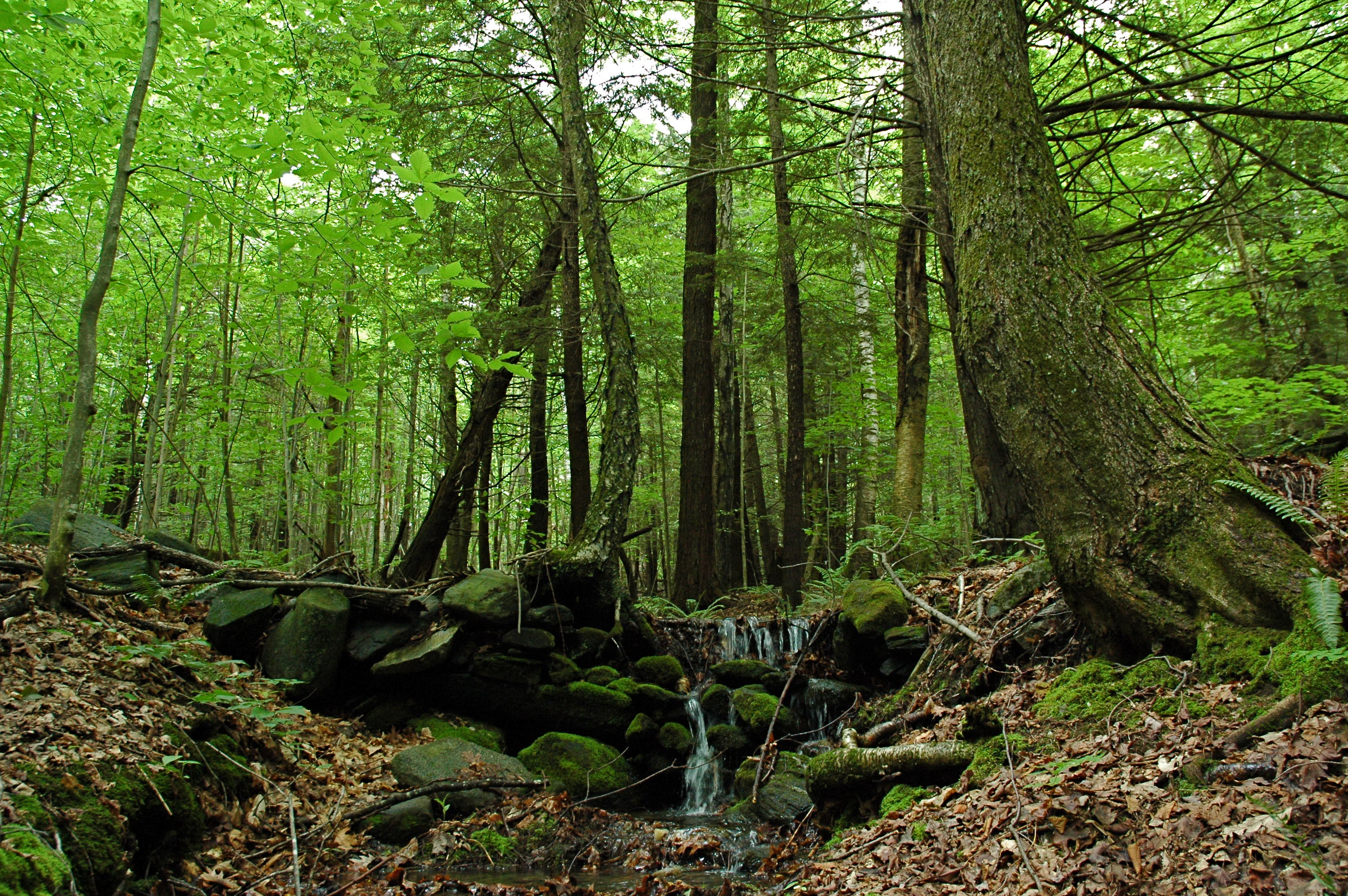Most consumers in the United States are now aware of genetically engineered foods, but far fewer realize that, beginning formally in 1988, biotech scientists have been working on the next frontier: genetically engineered trees. While the biotech industry claims GE trees could be a natural solution to deforestation, it’s far more likely that a shift to GE monoculture forests, heavily dependent on chemical inputs, would further pollute our soil, air and waterways, and exacerbate the problems of climate change.
Not All Forests Are Created Equal

Natural forests are more than a collection of trees. They are rich, biodiverse habitats for millions of species of plants, animals, and microorganisms that are essential to life. Forests protect soil and waterways from pollution, and even protect humans from heart and respiratory diseases. Perhaps most miraculously, the earth’s forests also store 289 gigatons of carbon in biomass, making forests one of the greatest contributors to slowing the rate of climate change.
Enter genetically engineered trees. The biotech industry is in the process of developing GE trees for a number of aims, including lower lignin content to ease processing. Lignin, a structural component of wood, must be removed from wood pulp before it can be used to make paper. GE trees with lower lignin content stand to save the paper industry a great deal of money by cutting out the expensive removal process. GE trees also promise faster growth, ease of converting wood into biofuels, protection from pests and resistance to herbicides. These developments would surely increase the profits of biotech companies, but at what cost to the planet and future generations?
Genetically Engineered Trees Threaten the Health of an Already Fragile Planet

The risks of GE trees are grave. From current GE trees evaluations and experiments as well as studies assessing the environmental impact of GE trees, several large issues were identified. Lower lignin content trees decompose faster and release more carbon dioxide than non - GE trees, greatly contributing to climate change. Additionally, GE trees require repeated and wide dousing of chemicals to eliminate pests and weeds, which furthers an industrial and chemically- driven approach to agriculture. This approach causes pollution to soil, waterways and air as well as heavy emissions of greenhouse gases. The development of GE trees will likely bring about massive, single-crop plantations, which can hardly replace natural forests. Monoculture plantations have already devastated natural forests around the world, leaving former inhabitants—mainly indigenous communities—without a home, among many other things, as detailed in Center for Food Safety’s 2016 Report on Genetically Engineered Trees. Native species contamination is also a risk, as pollen and twigs are likely to blow from GE plantations to natural forests where they can mate with native trees, impacting the way that those species function in their environment. Due to the interconnected nature of an ecosystem, when one factor changes it can set off a chain reaction, permanently changing our environment in unpredictable and often harmful ways.
A Way Forward for Trees, People, and the Paper Industry
Despite these risks, the biotech industry is spending millions in research and development of GE trees. Why? Because beyond being essential to life on Earth, trees are an extremely valuable resource, used for paper, lumber, and even fuel. The paper industry, however, would be wise to take a look at what sustainable businesses across the country are doing to meet demand for paper, while still protecting forests. Banana leaves, hemp, agricultural waste, recycled content, and even elephant poop are worthwhile explorations for the paper industry to pursue that can take the place of trees as the major victim of paper production. It’s not the trees that need to change, but rather the actions of those who interact with them. Natural forests need to be protected, and commercial forests must be managed sustainably.
Organizations such as the Forest Stewardship Council exemplify the standards of proper forest management in a competitive and economically beneficial manner. Until the risks of GE trees to our forests, climate, and future can be eliminated, funds for GE tree development and field trials should be reallocated to proper forest management and research on new and different conventional breeding techniques With the immeasurable importance that forests and their ecosystems play in our natural world, each solution must be evaluated extensively to ensure a holistically beneficial approach for our communities, our forests, and our climate.
To learn more about forests, follow Green America's Better Paper Project on twitter @BetterPaperProj!





